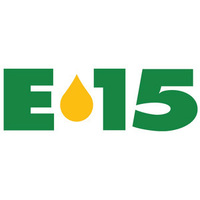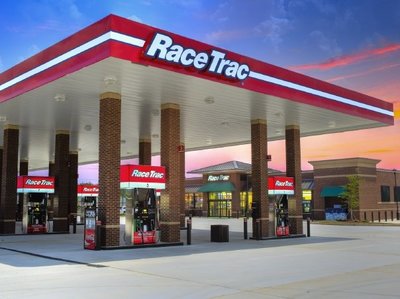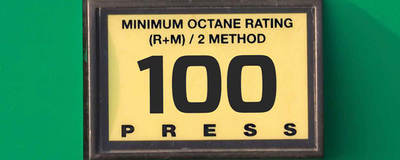RaceTrac Expands 100 Octane E15 Offering
The higher octane fuel will debut at more than 100 stores in Florida, Georgia, Texas and Louisiana.
 |
“RaceTrac’s mission is to make people’s lives simpler and more enjoyable, and offering a variety of fuel types to appeal to our guests’ needs is one of the ways we deliver on that mission,” said Max McBrayer, chief supply officer at RaceTrac. “With the debut of E15 in more than 100 of our stores, RaceTrac is proud to provide our guests a competitively priced alternative fuel option to complement our already diverse offering, which today includes other alternative fuel products such as E85 flex-fuel.”
E15 fuel is a higher octane fuel intended to improved vehicle performance due to ethanol burning cleaner and cooler in engines
An Octane Above
Tags: Octane; Environmental

The American consumer wants a few basic performance-related qualities from the automotive experience. Larger vehicles seem to be important. Fuel efficiency is key, especially when gas prices are high. For some, power is important when the pedal gets pushed to the metal. For others, environmental performance relative to greenhouse gas concerns is essential. Similarly, government regulators have their own variety of current and future needs related to greenhouse gas reduction goals.
Unfortunately, the range of wants and needs tend to be difficult to satisfy using existing fuels and conventional engine technology. That’s where the discussion of higher octane fuels—with engines designed to work specifically with those fuels— comes into play.
With the benefits of higher octane fuels also come some limitations. New engines manufactured to work specifically with octane fuels would require gasoline above today’s premium levels, perhaps around 96 AKI. (To put that into perspective, U.S. AKI currently ranges from 87 for regular to 93 for premium.)
Announced in April 2015, the Department of Energy’s Co-Optimization of Fuels and Engines initiative (formerly the Optima Project) has inspired the recent and increased conversation around higher octane fuel. The initiative’s goal is to develop advanced fuels and internal combustion engines that are economically viable, environmentally sustainable, massively scalable, and rapidly deployable. Higher octane fuels is an element that fits nicely in that wheelhouse.
Technologically Feasible
To satisfy the more exotic performance automobiles already running higher compression engines, retailers have carried premium gas, which accounts for only about 10% of the fuel market. However, a variety of less exotic automobiles like smaller crossovers are moving to turbo-charged, high- compression engines that run on more expensive premium gas and get higher mileage in return.
Complications come into play with the anticipated use of E25 (25% ethanol) to boost octane even further. Research conducted by the National Renewable Energy Laboratory found that 56% of the petroleum distribution equipment tested to an E17 level was compatible. The Fuels Institute, a research-oriented think tank founded by NACS in 2013, notes that as long as the ethanol is limited to E25, the impact would be far more manageable as equipment manufacturers are largely meeting that requirement today.
So how would such a new fuel be introduced to consumers? Would it be phased in slowly as the new premium, or more rapidly as the only high octane fuel on the market? A niche fuel is a possible solution, as it would meet material compatibility concerns with both older automobiles and the fueling infrastructure.
Marketing the New Fuel
Whatever the introduction, vested parties—from state and federal environmental regulators to marketers and retailers—agree that a new fuel must not offer any downsides for drivers, retailers or marketers. However, using traditional metrics, it seems there is no real need for a new fuel, especially after the fracking revolution brought more access to more fuel.
Instead, the primary motivator for bringing a new fuel and engine approach to market today is almost exclusively regulatory-driven to meet greenhouse gas emission reduction policies. At the forefront is the current Corporate Average Fuel Economy (CAFE) mileage standard of 54.5 mpg, set for 2025. And a business-as-usual approach will not provide sufficient gains to meet CAFE standards, according to the Department of Energy (DOE).
Some of the goals outlined by the aforementioned Co-Optimization of Fuels and Engines initiative (the Fuels Institute is a member of its external advisory board) include:
- Reduce per-vehicle petroleum consumption by 30%, versus the 2030 base case, which is constrained to using today’s fuels.
- Accelerate the deployment of advanced biofuels to meet the Renewable Fuel Standard Program’s 2030 goal of 15 billion gallons per year of advanced biofuel.
- Produce an additional 9% to 14% fleet greenhouse gas reduction by 2040.
DOE officials noted at the 2015 Fuels Institute Annual Meeting that these goals cannot be achieved using conventional technology. Higher octane fuels used by the appropriate engines is seen as a relatively low-impact contender for meeting these goals.
Generally Not Concerned
Yet the real challenge with a higher octane fuel and engine comes down to the resistance of the American consumer and the ultimate realization of greenhouse gas reduction goals.
A tremendous amount of actual change has in fact already occurred, driven by the regulatory push to reduce greenhouse gas emissions. However, much of the impact of that change has been hidden from the consumer. It’s tied up in the national debt, or in the difficulty of finding incandescent lightbulbs or energy-efficient consumer appliances.
A variety of polls were conducted in November 2015, ahead of the United Nations Climate Change Conference in Paris (COP21), all with generally similar results. For example, a poll conducted by the Pew Research Center found that 45% of Americans see climate change as a very serious problem, of which 30% believe it might be a serious problem for them personally. Some 25% did not see it as a serious problem at all. However, the poll also indicated that Americans are generally not as concerned about greenhouse gas emissions as the rest of the world, and that Democrats are far more concerned than Republicans.
Although an agreement was reached at COP21, tellingly it had to be entirely non-binding in critical reduction metrics and lacking in enforcement mechanisms.
Beyond “Should We?”
A recent New York Times poll found that in the midst of general support, when push comes to a specific shove, personally paying for climate was unpopular. Only 20% would support an electricity tax increase and only 36% would support a gasoline tax increase related to climate change. And that was generally a bipartisan sentiment.
The stated greenhouse gas reduction goals, if carried through, will more readily begin to influence the average American and perhaps their support for additional climate change initiatives. A Republican win in November would likely lower the intensity of support in Washington for the most aggressive greenhouse gas initiatives.
On the other side, the most aggressive proponents of strict carbon reduction really do not have the perspective of an “all of the above” energy strategy that would include more conventional combustion technologies alongside more exotic solutions such as hydrogen, electric (BEV), wind and solar.
At COP21, the Obama administration agreed to its established target to reduce greenhouse gas emissions 26% to 28% (compared against 2005 levels) by 2025. The long-term goal is an 80% reduction by 2050. Most combustion technologies become increasingly untenable as we approach 2050. Toyota, for example, just announced its intention to eliminate gasoline cars by that date. A better picture of the future will emerge after the next election, and when the Obama administration’s CAFE standards come under additional review in 2018. As it stands today, higher octane solutions would represent a relatively low impact solution to a complex problem, even if it is ultimately only implemented as a transition fuel.
Keith Reid is the editorial director at Fuel Marketer News and the editor of Fuel Oil News. He was the previous editor of National Petroleum News.




